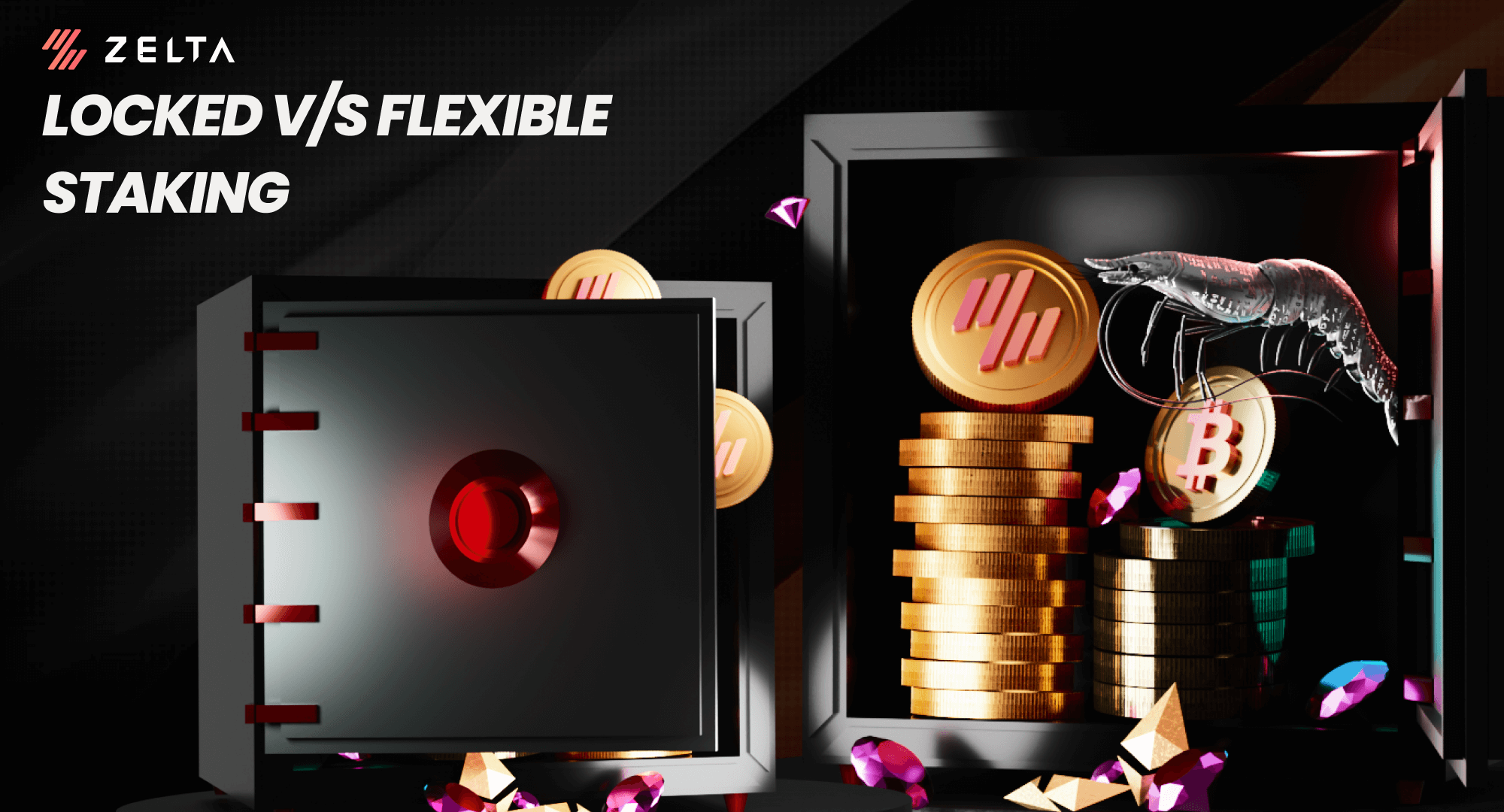

Locked Staking Vs Flexible Staking: Explained for Beginners
Staking is the practice of storing and locking a predetermined quantity of a cryptocurrency in a wallet to maintain a blockchain network's operations and in return, be rewared for doing so.
Earning staking rewards is similar to earning interest when money is stored in a savings bank account, except in staking the rewards are earned in the same crypto tokens that has been used for staking.
This method is employed in the proof-of-stake consensus mechanism for network validation in order to protect the network.
With some basic fundamentals in place, staking commonly makes use of the following types:
1. Locked Staking
2. Flexible Staking
Let's have a look at both.
What is Locked Staking?
Locked Staking is a type of staking option where an investor can engage in blockchain validation by locking up a particular amount of a specific cryptocurrency.

The user in return receives incentives for staking their tokens in the form of additional tokens or a portion of blockchain fees which generates a good passive income. The more tokens are staked the higher is the passive income.
This also proves to be one of the great advantages of Locked Staking.
In technical terms, tokens in locked staking are employed in the proof-of-stake (PoS) mechanism where the amount of tokens a user stakes determines the number of tokens that are used to validate transactions.
What is Flexible Staking?
Flexible Staking is a type of staking which enables the users to stake their tokens and earn rewards while also allowing them to withdraw their staked tokens at any point in time. This differs highly from locked staking where withdrawing tokens before the staked perios results in a user completely losing their earned rewards or interest.

Users of flexible staking have greater control over their assets which enables them to change their staking strategy whenever they feel it is necessary.
"Continuous Staking" is also one such form of flexible staking which enables a user to stake their tokens and receive benefits continually, without a lock-up period. Users can also opt to un-stake their tokens at any moment, but doing so will result in a penalty that is often a minor percentage of the staked tokens.
The penalties levied can vary from project to project. Hence is is important to study the project's paperwork and know the details before participating. Specifically, participating in the governance and validation of a blockchain network can be accomplished through both flexible staking and locked staking.
Locked Staking vs Flexible Staking: The Difference
In locked staking users are required to lock up a certain amount of tokens for a specific period of time in order to earn rewards. They are also not able to withdraw their tokens during this time, and if they do then there is a loss of earned interest.
Locked staking is typically used in proof-of-stake (PoS) blockchain systems where the validation of transactions and the creation of new blocks is determined by the number of tokens a user holds.
In flexible staking however, users have the option to withdraw their staked tokens at any time without a penalty. This type of staking is particularly useful for users who wish to have more control over their assets.
Flexible staking can be seen as a trade-off between security and flexibility. Locked staking provides more security to the network, but in return it is less flexible.
It is also worth noting that different projects may have different criteria for flexible and locked staking. This can range from different rewards to different penalties and so on. Hence it becomes important to go through the specifics before taking a call.
In addition to Locked Staking and Flexible Staking, there also exists another set called Hard Staking and Soft Staking. Let's have a look at each.
What is Soft Staking?
Soft staking is a mechanism for participating in a blockchain network's validation and governance.
In soft staking users may stake their tokens and receive rewards but they are also free to use or move their tokens without paying any fees. This kind of staking is used in networks where a user's token holdings affect the validation of blockchain transactions.
Soft staking is less restrictive than other staking methods, giving users more control over their resources and the ability to change their staking strategy as required.
What is Hard Staking?
Hard staking is a type of staking where users must lock up a particular quantity of tokens for a specific amount of time in order to get rewards. During this time, they are not permitted to move or withdraw their tokens, and if they do, they get penalised.
Hard staking is more restrictive and is generally used in networks where the amount of tokens a user holds determines the validity of transactions and the generation of new blocks.

Conclusion
Staking plays an important role in maintaining the security and stability of the network. By staking their coins, users are essentially committing to acting in the best interest of the network and helping to prevent malicious activities. For this reason alone many projects incentivize users for staking their coins by offering rewards.
Stake Bitcoin and other Cryptocurrencies with High APYs on Zelta.io.
(Also read: What are Soul Bound Tokens?)
Image Credits: Gadgetstouse; Student Coin
